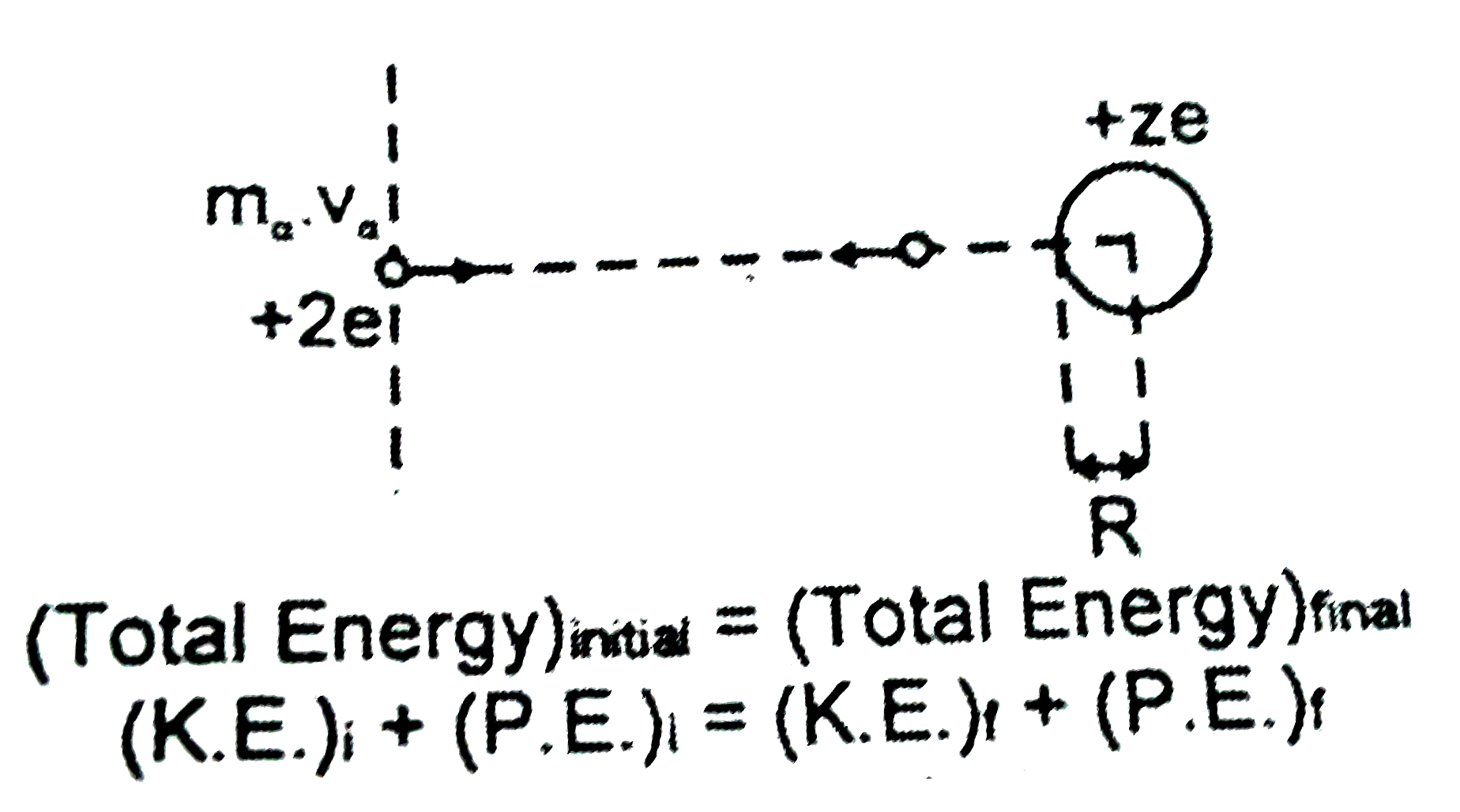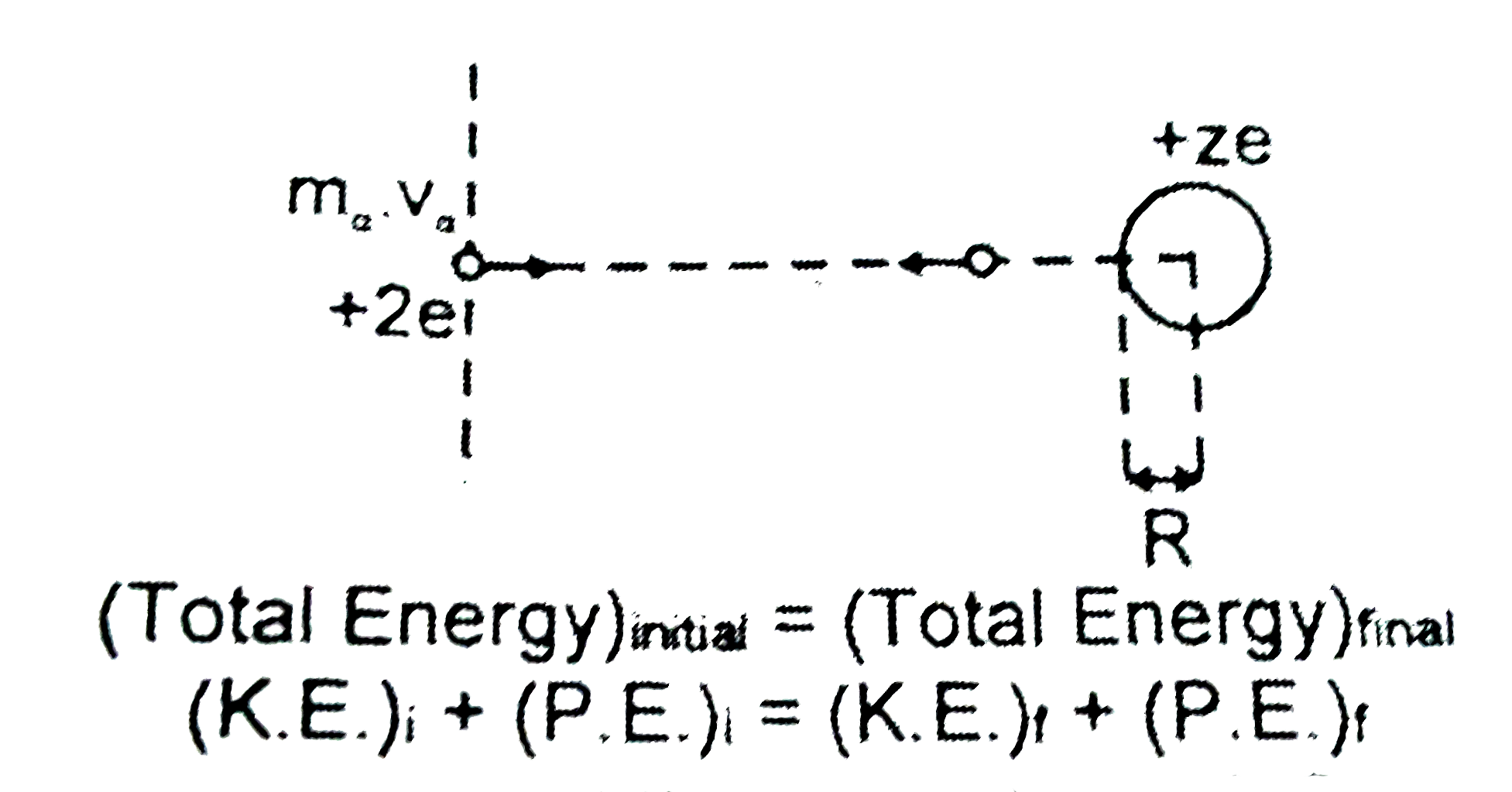Rutherford model: The approximate size of the nucleus can be calculated by using energy conservation theorem in Rutherford's -scattering experiment. If an -particle is projected from infinity with speed v towards the nucleus having Z protons, then the -particle which is reflected back or which is deflected by must have approached closest to the nucleus .It can be approximated that particle collides with the nucleus and gets back. Now if we apply the energy conservation equation at initial point and collision point then:

, since P.E. of two charge system separated by infinite distance is zero. Finally the particle stops and then starts coming back.
Thus the radius of nucleus can be calculated using above equation. The nucleus is so small a particle
that we can't define a sharp boundary for it
Radius of a particular nucleus is calculated by the projection of -particle from infinity at a particular speed. Let this radius is the true radius . If the radius calculation for the same nucleus is made by another -particle with half of the earlier speed, then the percentage error involved in the radius calculation is :
Step by step video & image solution for Rutherford model: The approximate size of the nucleus can be calculated by using energy conservation theorem in Rutherford's alpha-scattering experiment. If an alpha-particle is projected from infinity with speed v towards the nucleus having Z protons, then the alpha-particle which is reflected back or which is deflected by 180^@ must have approached closest to the nucleus .It can be approximated that alpha particle collides with the nucleus and gets back. Now if we apply the energy conservation equation at initial point and collision point then: (P.E.)_i= 0, since P.E. of two charge system separated by infinite distance is zero. Finally the particle stops and then starts coming back. 1/2m_alpha v_alpha^2+0=0+(Kq_1q_2)/Rimplies 1/2m_alphav_alpha^2=K(2exxZe)/R implies R=(4KZe^2)/(m_alphav_alpha^2) Thus the radius of nucleus can be calculated using above equation. The nucleus is so small a particle that we can't define a sharp boundary for it Radius of a particular nucleus is calculated by the projection of alpha-particle from infinity at a particular speed. Let this radius is the true radius . If the radius calculation for the same nucleus is made by another alpha-particle with half of the earlier speed, then the percentage error involved in the radius calculation is : by Chemistry experts to help you in doubts & scoring excellent marks in Class 12 exams.
Topper's Solved these Questions
Similar Questions
Rutherford model: The approximate size of the nucleus can be calculated by using energy conservation theorem in Rutherford's α-scattering experiment. If an α-particle is projected from infinity with speed v towards the nucleus having Z protons, then the α-particle which is reflected back or which is deflected by 180∘ must have approached closest to the nucleus .It can be approximated that α particle collides with the nucleus and gets back. Now if we apply the energy conservation equation at initial point and collision point then:

(P.E.)i=0, since P.E. of two charge system separated by infinite distance is zero. Finally the particle stops and then starts coming back.
12mαv2α+0=0+Kq1q2R⇒12mαv2α=K2e×ZeR⇒R=4KZe2mαv2α
Thus the radius of nucleus can be calculated using above equation. The nucleus is so small a particle that we can't define a sharp boundary for it
An α-particle with initial speed v0 is projected from infinity and it approaches up to r0 distance from a nuclie. Then, the initial speed of α-particle, which approaches upto 2r0 distance from the nucleus is :View SolutionIn scattering experiment , α -particles were deflected by
View Solution
Knowledge Check
- Question 1 - Select One
Rutherford experiment suggested that the size of the nucleus is about
A10−14m to 10−12mB10−15m to 10−13mC10−15m to 10−14mD10−15m to 10−12m
What conclusion is drawn from Rutherford.s scattering experiment of α-particles?
View SolutionIn Rutherford's alpha-rays scattering experiment, the alpha particles are detected using a screen coated with
View SolutionRutherford's α− scattering experiment was successful in discovering
View SolutionRutherford's alpha-particle scattering experiment discovered
View SolutionRutherford's αparticle dispersion experiment concludes that
View SolutionRutherford's α particle scattering experiment eventually led to the conclusion that
View SolutionRutherford's α particle scattering experiment eventually led to the conclusion that
View Solution

